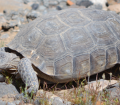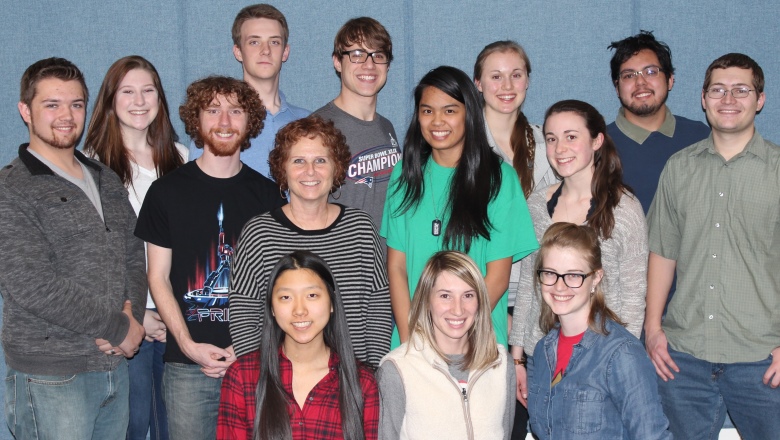Nancy LaTourette (center) surrounded by Davidson Academy 2016 STEM BOPPERS –Nancy LaTourette Photo
Education Goes Viral
How the NEXUS STEMBOPS program is introducing students and the community to STEM related research
By Jane Palmer
April 1, 2016
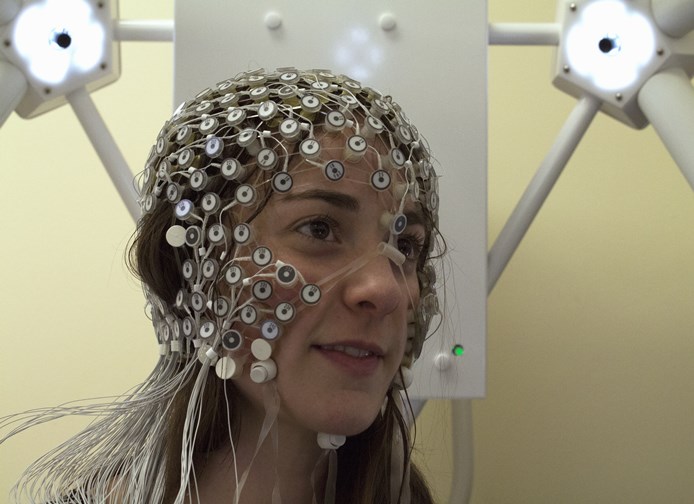
Morgan Heath-Powers, Davidson Academy
Neuroscience
NIH, NIGMS, Center for Biomedical Research Excellence (COBRE)
under grant number P20 GM103650 –Hannah Huh Photo
Stemming the Divide
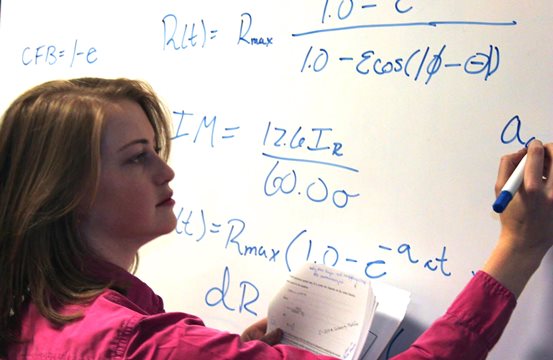
Jessica Smith, University of Nevada, Reno Graduate Student
High Performance Computing – Outreach
–Justin Stevens Photo
Breaking Down the Barriers
In the meantime, however, one important goal of the project is to break down the intimidation factor of science and engineering for young students. To this end, one fifteen-year-old STEMBOPS student is soon to start on a day-by-day video blog of her introduction to the lab, documenting her first few hours, or days, of confusion and uncertainty. She’ll then take viewers through the gradual process of gaining understanding, clarity and confidence. LaTourrette hopes the video series will show school students that all scientists and engineers start in the same place and that a STEM career, with the right training, is attainable.
“I’d like science and engineering not to be seen as something apart,” LaTourrette said. “You don’t have to have a certain personality type or left brain aptitude and you don’t have to know all the facts intrinsically to be a scientist or engineer.”
Now that the STEMBOPS students have created a significant body of work, the goal is to get the videos out into the community where they can start doing some good, LaTourrette says. A multitude of options exist for doing this: teachers could incorporate them into the school science curriculum or summer science camp programs and campus Hispanic student organizations or foreign language students could also view the videos.
“There is a myriad of ways that we can use this material,” LaTourette says. “I can envision the scope of this work ever expanding with new interested students, additional faculty members that are willing to be mentors, and a multitude of venues that can air the videos.”
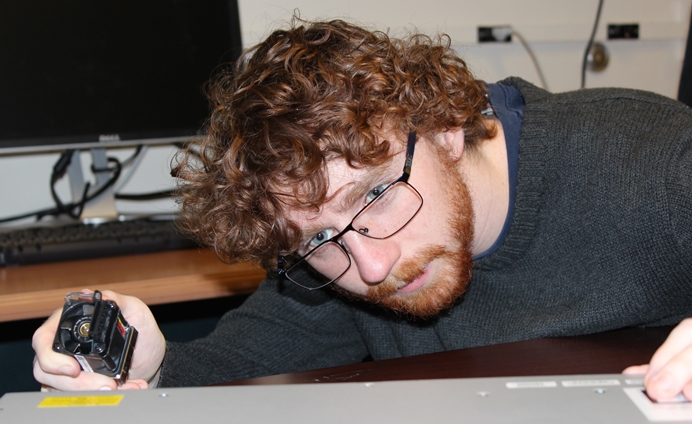
Cayler Miley, University of Nevada, Reno Undergraduate
Cybersecurity Network Analytics
–Justin Stevens Photo
View STEMBOPS videos at: http://sensor.nevada.edu/nexus/education/stembops/
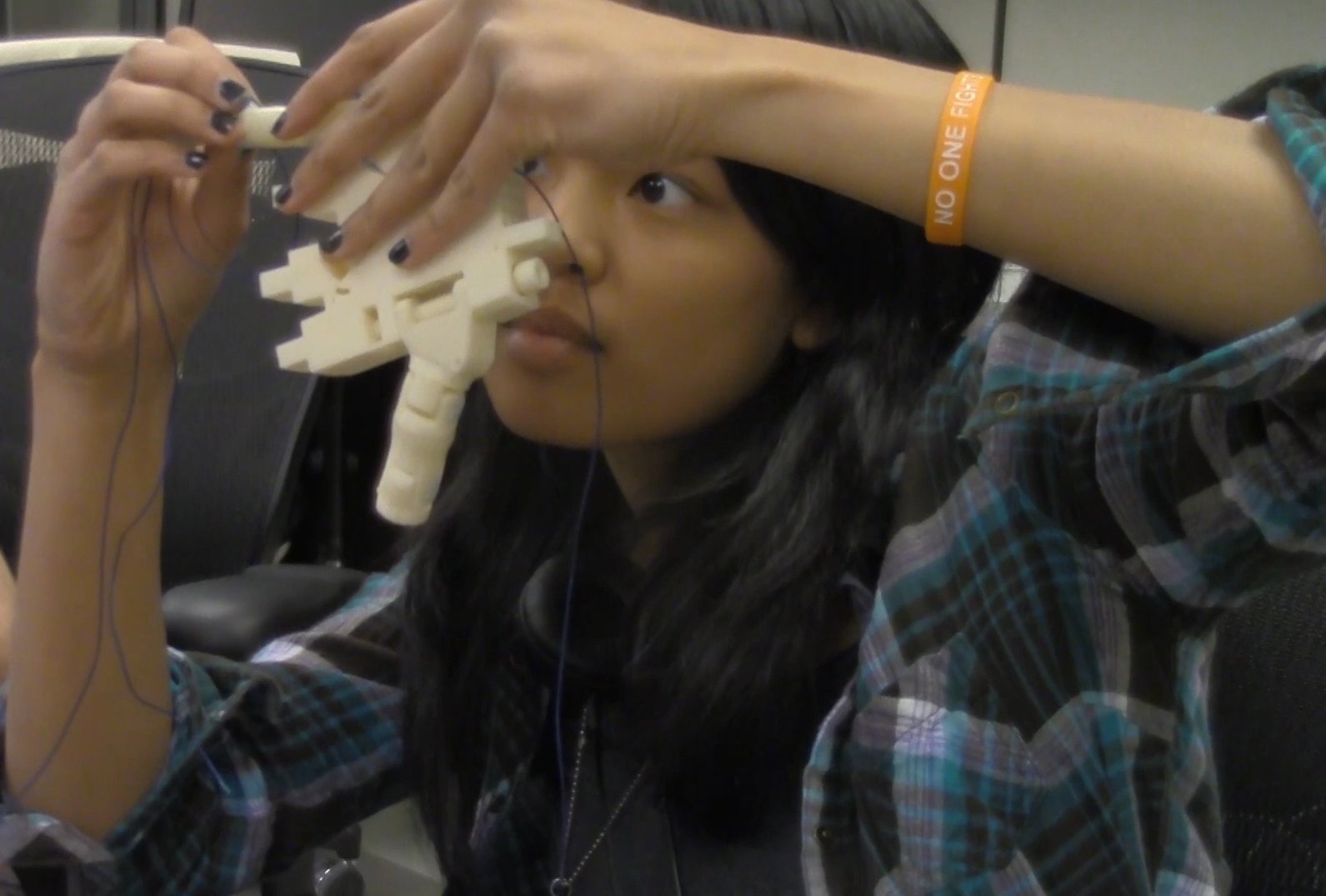
Giselle Serate, Davidson Academy
3-D Printed Robotic Hand
–Dylan Bowman Photo
Securing Science’s Human Infrastructure
Trained scientists and technicians form the backbone of research and development at NEXUS, but for solar energy to be sustainable in future years requires a steady supply of young researchers entering the Science, Technology, Engineering and Math (STEM) disciplines.
To this end, the NEXUS goal for Workforce Development and Education is to develop a sustainable STEM workforce by creating a pipeline of STEM-trained students, educators, and workers. The project is also committed to increasing public understanding of solar energy, water and the environment.
“Through projects such as our STEMBOPs program, NEXUS will expose K-12 students and the Hispanic community to real science research,” says Gayle Dana, Project Director of NEXUS. “These initiatives are really going to help close the racial and gender disparities in the STEM fields in Nevada.”



